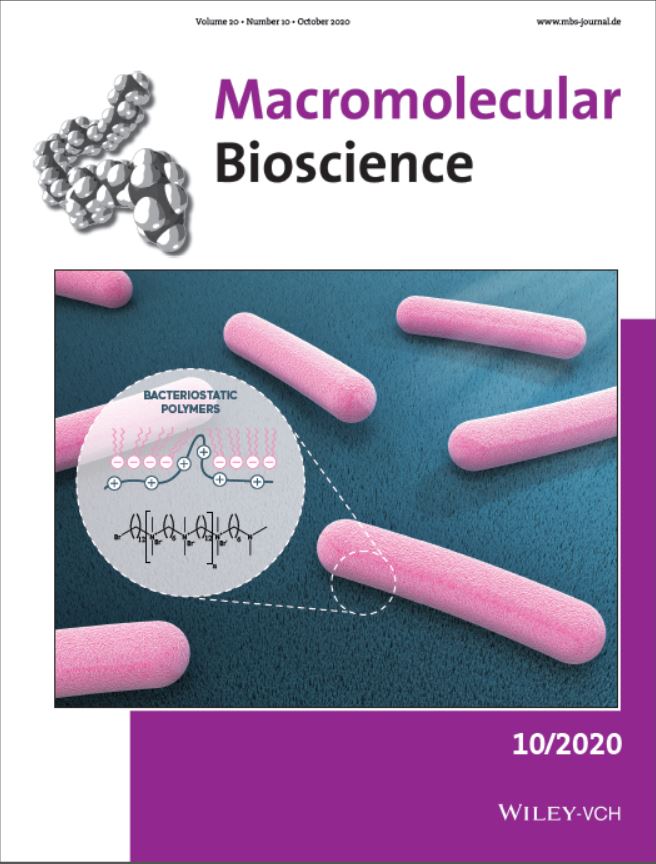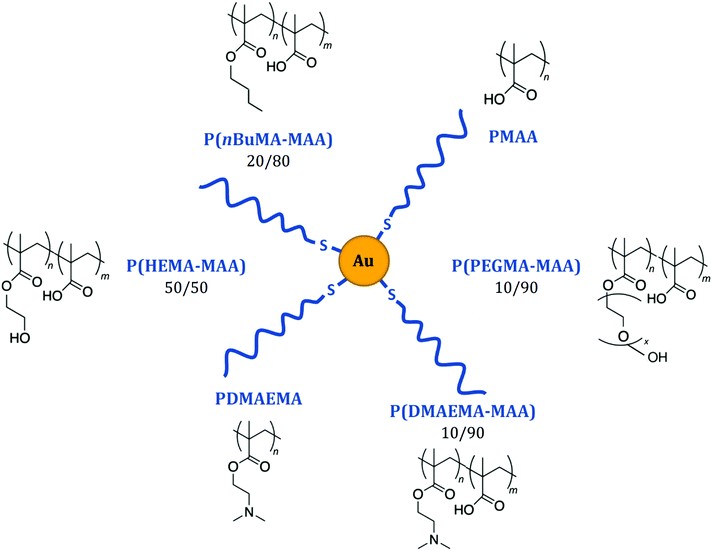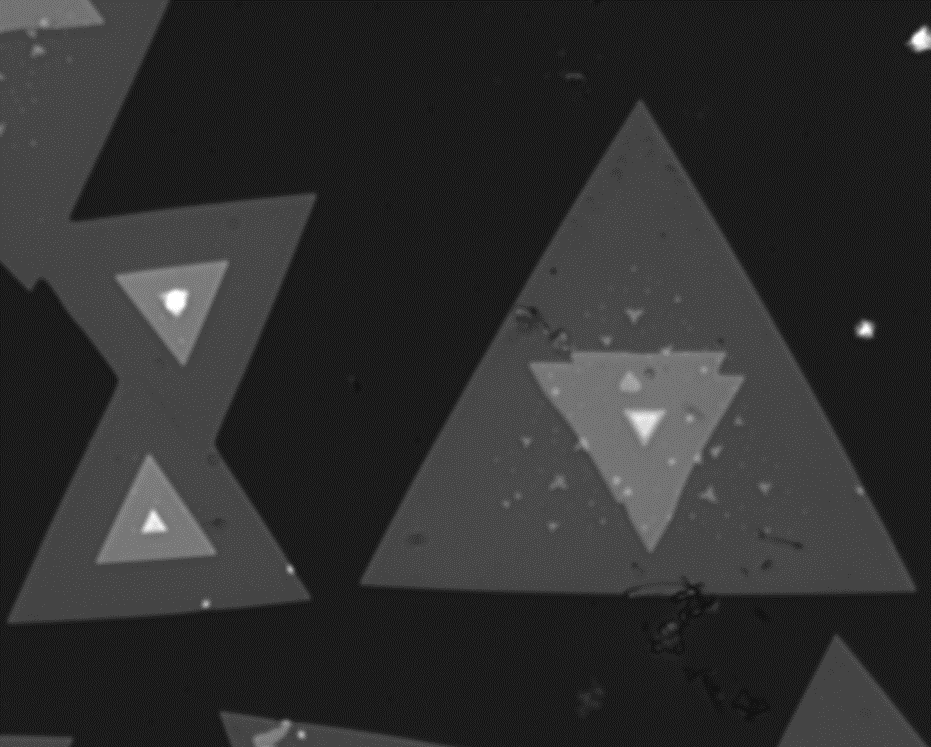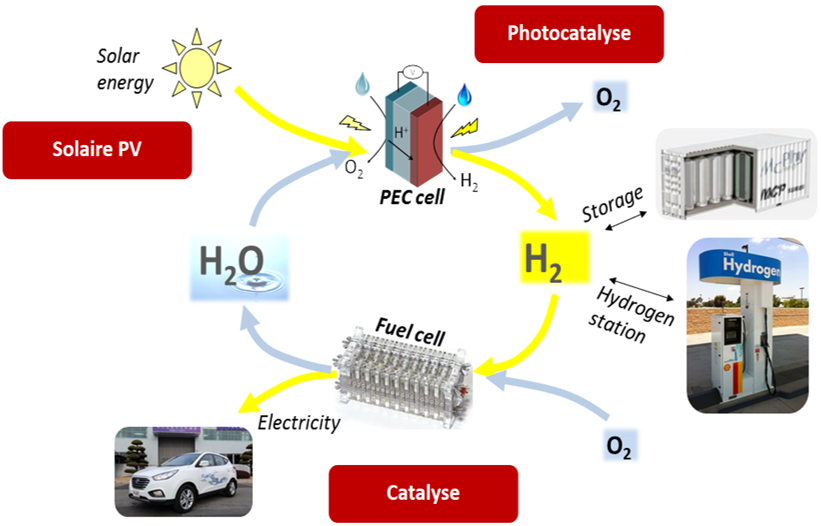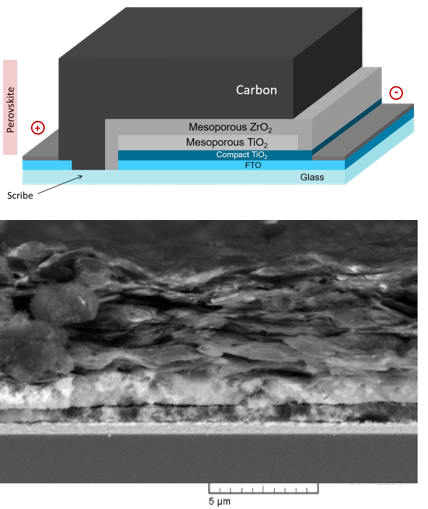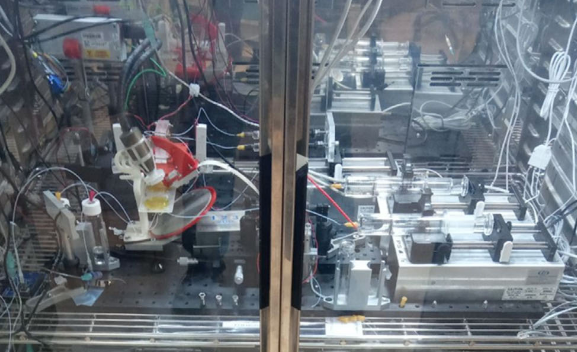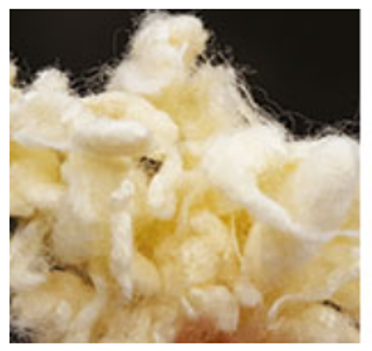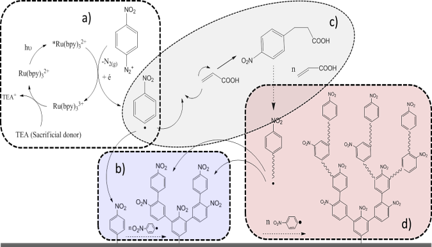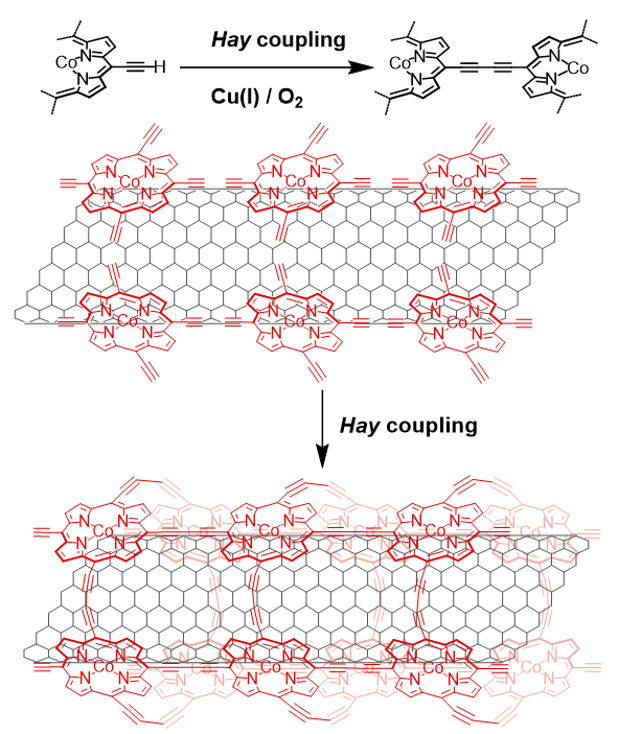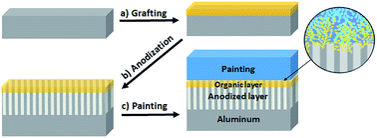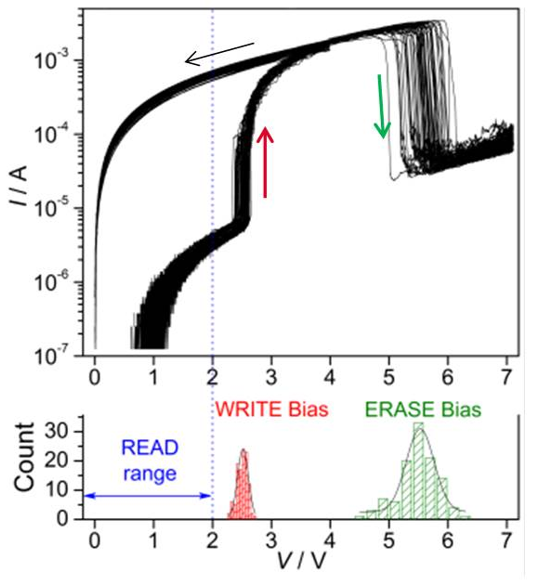Pages scientifiques 2024
|
|
MEDICAL IMPLANTS : Recanalization of coiled aneurysms remains unresolved. To limit aneurysm recanalization after embolization with coils, we propose an innovative approach to optimize aneurysm healing using fucoidan-coated coils. Within a multidisciplinary consortium, LICSEN is leading the coil surface-chemistry part. This proof-of-concept study demonstrated the feasibility and efficacy of treatment with fucoidan-coated coils to improve aneurysm healing. The results in this rabbit in vivo model showed that fucoidan-coated coils have the potential to improve healing following endovascular treatment. Further reading: |
|
|
ANTIBACTERIAL SURFACES : Microbial contamination and biofilm formation on the surface of inert materials are crucial concerns in the medical and food industries. We are working on the functionalization of surfaces (glass, polyethylene) by polymers called polyionenes containing quaternary ammoniums along the entire backbone, separated by hydrophobic fragments. Their amphiphilic character, i.e. their hydrophobic/charge ratio, is one of the key parameters for obtaining an effective bacteriostatic effect. Chemical grafting takes place in several stages (polydopamine, diazonium salts) to generate the chemical functions that enable surface polymerization of the ionenes. Bacterial adhesion results show that our surfaces are both pro-adhesive and bacteriostatic. To facilitate transfer to industry (in collaboration with INRAE), we are also studying the deposition of these polymers by photochemical grafting and printing. Main contributors : Géraldine Carrot (until 2023), Ludovic Tortech (since 2023), Fanny Hauquier Further reading :
|
|
|
Polymer-grafted nanoparticles for radiosensitization: In radiotherapy, metallic nanoparticles (NPs) are particularly interesting for their ability to amplify the effects of radiation. However, they sometimes present stability problems, and their irreversible aggregation makes them difficult to use effectively. We are therefore developing nanoparticles stabilized by a covalently grafted polymer crown covalently grafted polymer crown, via a "direct" strategy in which the previously synthesized and functionalized polymers are used as ligands to synthesize the nanoparticles. These nano-objects are characterized in detail by SANS and SAXS, before being used for radiosensitization. Iodine-131 irradiation tests have demonstrated the efficacy of nanoparticles in enhancing cancer cell destruction. In vivo tests have also recently been carried out. We are now seeking to study the internalization of our objects in cells as a function of the nature of the polymer crown. We are also targeting the grafting of active ingredients onto the polymer crown, with the aim of coupling radio-/chemo-therapy (NIMBE/LIONS collaboration and INSERM/CEA TIRO/Nice- UMR E4320 laboratory). Main contributors : Gerladine Carrot (until 2023), Jean-Philippe Renault (from NIMBE/LIONS) Further reading : |
|
Nanostructuring graphene into 0D graphene quantum dots (GQD), 1D graphene nanoribbons or 2D nanomeshes allows opening a bandgap in its electronic structure
|
Graphene Quantum Dots Bottom-up Synthesis and optical properties: The outstanding electronic, optical and mechanical properties of graphene strongly inspire the scientific community. One of the main challenges for the use of graphene in devices is the control and modification of its electronic properties, and notably the controlled opening of a sizable bandgap. When a material is reduced to nanoscale dimensions, the confinement induces size-dependent properties. The reduction of one dimension of graphene down to the nanoscale leads to graphene nanoribbons (GNRs) while the reduction of the two dimensions leads to graphene quantum dots (GQDs), both having a bandgap. A great attention has been paid to the size reduction of graphene using conventional top-down approaches (lithography and etching, thermal treatments and oxidation of bulk materials). However, top-down approaches do not permit to manipulate the structure of the material at the atomic scale. In particular, they do not allow a sufficient control of the morphology and oxidation state of the edges, which drastically impact the properties. The resulting materials are inhomogeneous and their properties are largely impacted by defects. To truly control, with the required level of precision, the morphology and the composition of the materials and of its edges, the bottom-up approach is the relevant way to proceed. Main contact: Stéphane Campidelli Further reading: Fait-Marquant Iramis 2023 (in French) / Nature Communications 2023 / Nature Communications 2018 / BOGART Labex-project / GANESH ANR-project |
|
Absorbance of sorted and unsorted carbon nanotubes |
Optical properties of chemically-sorted single-wall carbon nanotubes: Single-walled carbon nanotubes have exceptional electronic and optical properties, but are unfortunately synthesized in the form of a poly-dispersed mixture of nanotubes of different length, diameter and chirality. Depending on their chirality, these SWNTs are either metallic or semiconducting. To use them in devices, it is necessary to extract from the mixture the nanotubes with the targeted properties. We are studying the optoelectronic properties of SWNTs at telecom (near-infrared) wavelengths, with a view to integrating them as light sources and detectors in photonic circuits integrated on the silicon platform. In particular, we have developed a highly selective method for the solution separation of semiconducting SWNTs with their fundamental optical transition centered at a wavelength of 1550 nm. These SWNTs are extracted via selective polymer adsorption and then connected into phototransistors directly on silicon waveguides. In particular, we have demonstrated that these devices combine electro-emission and photodetection functions. Main contact: Arianna Filoramo Further reading : Scientific Reports 2018 / Adv. Funct. Mater. 2017 / CARBONIC ANR-project / CARTOON FP7-project |
|
Monolayers, bi- and tri-layers of MoS2 grown by CVD at Licsen and observed by optical microscopy using an anti-reflective substrate (Ullberg et al. 2023). |
2D materials synthesis and optoelectronic properties : our work on 2D materials includes the synthesis of MoS2 and other TMDs by CVD, their intergartion in field-effect transistors (FETs) and photo-tranisitors (alone or combined with a post-functionnalization step using perovskite NPs), the study of microscopy techniques for high-contrast observation of both their morphology and charge density. We also worked intensively on graphene oxide chemistry, deposition and observation methods. Main contact: Vincent Derycke Further reading : ACS Nano 2024 / Nanoscale 2019 / Nathan Ullberg thesis / Nouvelle microscopie optique très haute sensibilité pour l'observation des nanomatériaux bidimensionnels (in French) / MoS2 Transistors with Ultrathin and Robust Organic Gate Dielectric |
|
|
In the very active field of chemistry and material-science for renewable energy prodcution, conversion and storage, the Licsen mostly studies : (1) H2 to electricity conversion in platinum-free fuel-cells (of PEMFC type), with a focus on the cathode side (ORR being the most limiting factor); (2) Green H2 production by photo-electro-catalysis; (3) Perovskite-based tandem photovoltaic cells and in particular, their stability. Find more details below. |
|
|
Chemistry and material science for platinum-free hydrogen fuel-cells : In the actual global plan towards a sustainable energy future, fuel cells are promising candidates for a clean and efficient energy conversion, with a wide range of applications. The power loss at fuel-cell cathodes during Oxygen Reduction Reaction (ORR) is among the most limiting factors of the chemical-energy-based conversion. The slow ORR kinetics on Pt-catalysts, their low availability and high cost make alternative Pt-free catalytic materials highly desirable for improved performances of fuel cells. The activities of the LICSEN group lie at the interface between the development of new materials and the operation of elementary PEM cells. We develop platinum-free catalysts on highly electroactive carbon support, as well as robust and cost-efficient shaping methods to produce medium- to large-scale PEMFCs. Beyond the catalytic material itself, the fuel cell (bipolar plates, membrane-electrode assembly, catalyst support layers) is studied and optimized. Research efforts focus on improving ORR efficiency, studying the impact of catalyst layer microstructure on performance and understanding the limiting factors using electrochemical techniques (rotating disk electrode, cyclic voltammetry and impedance spectroscopy).
Main contacts: Bruno Jousselme, Renaud Cornut, Frédéric Oswald and Mélanie François Further reading: PEGASUS EU-project / Electrochem. Commun. (2023) / Vers une pile à combustible sans métaux nobles (in French) / ChemElectroChem (2023) / Analytical Chemistry (2022) / Chemical Science (2021) |
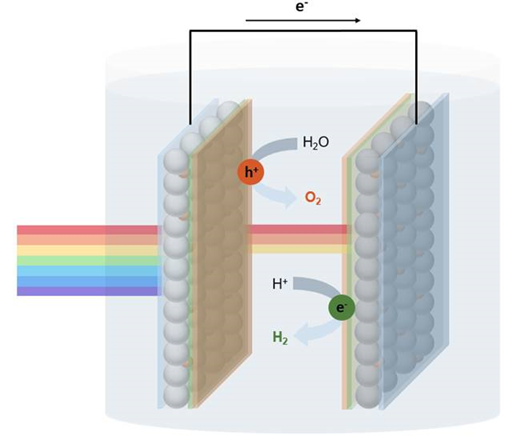
|
Photocatalytic hydrogen production: The future of energy supply depends on innovative breakthroughs regarding the design of efficient systems for the conversion and storage of the most available source of renewable energy: solar energy. The production of hydrogen through direct sunlight-driven water splitting in a Photo-Electro-Chemical (PEC) cell appears as a promising and appealing solution. Such cells need to respond to 3 main characteristics: sustainability, cost-effectiveness and stability. Fulfilling these requirements raises important scientific questions regarding mainly the elaboration and the combination of the best possible materials able to harvest light and catalyze H2 and O2 evolution. Efficient PECs have been made using expensive materials and complex methods. In line with the trend, the LICSEN laboratory has focused its activities on the development of efficient and large-area photoelectrodes based on non-precious materials and fabricated using common low-cost techniques (doctor blade coating, screen printing, inkjet printing, spray coating, etc.). The main research is devoted to reducing electron-hole recombination to improve the efficiency of semiconductor-based devices. Various research efforts are focused on minimising recombination losses in the bulk and at the surface of semiconductors by interface engineering with the creation of interfacial layers between different materials in a device, passivation layers that create a protective barrier against defects and dangling bonds, doping control to improve carrier collection efficiency, and structuring to increase the absorption of photoelectrodes. Main contacts: Bruno Jousselme, Frédéric Oswald and Mélanie François. Further reading: PROSPER-H2 ANR-project / All solution-processed organic photocathodes / A H2-evolving photocathode based on direct sensitization of MoS3 / De l'hydrogène par électrolyse de l’'eau sans platine (in French) /ChemElectroChem (2023) / J. Am. Chem. Soc. (2019) |
|
Triple mesoscopic architecture and SEM image of a carbon-based perovskite solar cell (PSC)
|
Perovskite photovoltaic : In the very challenging race for sustainable energy sources, metal halide perovskite solar cells (PSCs) have undergone unprecedented progress with efficiencies of 26.1% and even 33.7% in tandem configuration. But their limited stability prevents their mass production. Encapsulation methods have been developed to prevent moisture and oxygen from permeating into the perovskite layer but could not sufficently improve photo and thermal stability. A one-year stable (under constant illumination) perovskite module has been recently published. This device uses a carbon counter electrode that significantly enhances lifetime and has become one of the most prevailing scaffolds for constructing stable PSCs. Since then, carbon electrode-based perovskite solar cells have established as highly promising architectures for the next generation of stable and high efficiency PV-cells. The fully printable design of the carbon based triple mesoscopic architecture enables rapid upscaling while materials and processes allow for sustainable manufacturing. Single-junction perovskite photovoltaic devices enable greater than 1.0 V open-circuit voltage generated by a perovskite with a bandgap of 1.5 eV. PSCs can be combined in series with another perovskite or silicon to produce an operating voltage exceeding 1.7 V, which can surmount the potential required for unassisted water splitting at high current densities. While these performance and characteristics of perovskite devices are very well suited for water splitting, its extreme sensitivity to water makes it difficult to use such devices directly as photoelectrodes. LICSEN is developing fully printable PSCs based on triple mesoscopic carbon architectures. Through judicious choice of materials, the chemical composition of perovskite is tuned according to the needs of the various projects (bandgap modification, current matching to photoanode for water splitting,etc…). This architecture is also tested in real outdoor operating conditions at SIRTA on a photovoltaic testing platform currently under development. This activity is developped in very tight collaboration with the LPICM (Ecole Polytechnique). Main contacts: Frédéric Oswald and Bernard Geffroy (now retired) Further reading: X-ETL ANR-project / TRAPPER ANR-project / Scientific Reports (2022) / J. Photon. Energy (2020) / J. Phys. Chem. C (2019) |
|
Automatic sorting tool based on computer vision and multi-energy X-rays. Chem. Eng. J. 441, 135886 (2022).
Microfluidics platform combining a microfluidic chip, infrared and X-ray fluorescence spectroscopy for the study of hydrometallurgical processes. Nano Sel. 3, 425 (2022). |
RECYCLING: The decarbonization and digitization of the economy is accompanied by a sharp increase in the consumption of metals (lithium, cobalt, copper, niobium, etc.), as well as by an important production of waste electrical and electronic equipment (WEEE). As part of the SCARCE joint laboratory (CEA/NTU Singapour), multiple processes have been developed to recycle strategic metals from WEEE, in particular those with low recycling rates (tantalum, rare earths, etc.). The use of artificial intelligence coupled with multi-energy X-ray analysis has enabled the development of a unique sorting tool, capable of enriching waste streams with strategic metals by sorting electronic components from WEEE. The development of hydrometallurgical metal purification processes is facilitated by the laboratory's microfluidic platform, which combines infrared and X-ray fluorescence spectroscopy to study separation processes (liquid-liquid extraction, ion exchange resins, membrane processes, etc.). Main contacts: Jean-Christophe Gabriel, Guillaume Zante Further reading: "New technologies to recycle electronic waste" (article in The Conversation) / Fait-Marquant Iramis 2022 (in French) / Fait-Marquant Iramis 2020 (in French) |
|
Polymer fibers for water depollution
|
GAS & WATER FILTRATION : With our partners at Université Paris-Saclay and the startup AJELIS, we develop polymer fiber materials with advanced capabilities for water depollution, industrial liquid-wastes depollution, rare-earth and metal recovery, air and toxic gas filtration... Main contact: Pascal Viel Further reading : Discover the company AJELIS / "Procédé SOLIEX : une rupture technologique pour traiter les effluents" (in French) / Brevet Nanofibres |
| LICSEN was founded in 2014 by merging the former LCSI (Laboratoire de Chimie des Surfaces et Interfaces) and LEM (Laboratoir d'Electronique Moléculaire), both having shared expertise in surface functionalization and nanomaterial chemistry. The ability to add new functionalities to surfaces and nanomaterials through the development of chemical functionalization processes remains at the core of many of our activities. |
|
Main contacts: Guy Deniau, Pascal Viel |
Diazonium-based surface functionalization: - SEEP (Surface Electroinitiated Emulsion Polymerization) : a process for the electrografting of vinylic polymers on conducting surfaces - GRAFTFAST® : a process for the grafting of polymers on surfaces by chemical reduction of diazonium salts. These processes and their optimizations/evolutions are used in different projects such as: antibacterial surfaces, medical implants modifications (see the Bio/Health topic), anti-corrosion primers, printed electronics, organic electronics (see below), etc. Further reading: Diazonium salts induced anchoring process : mechanism, application(s) (PhD thesis of A. Mesnage 2011) |
|
Main contact : Stéphane Campidelli |
Chemistry of carbon nanontubes : The fabrication of functional hybrid materials that preserves and combines the properties of their building blocks is a central issue of nanosciences. Among the different classes of nanomaterials, carbon nanotubes and graphene constitute a class of materials exhibiting exceptional mechanical and electronic properties and were also found to be promising candidates for composites, electronic, sensing, energy conversion and biomedical applications. However, fabrication of nanotube or graphene-based molecular assemblies is still limited because of the difficulty to incorporate highly engineered molecules on the nanotube surfaces. This problematic issue can have mainly two origins: incompatibility between the functionality on the molecules and the conditions required for nanotube functionalization and/or the fact that nanotube functionalization requires a large excess of reagent that is difficult or impossible to recycle. In this context, we work on the chemistry of carbon-based nanomaterials and we develop innovative functionalization methods for these materials. Carbon Nanotube-Templated Synthesis of Covalent Porphyrin Network for Oxygen Reduction Reaction, J. Am. Chem. Soc. (2014) / Functionalization of Carbon Nanotubes through Polymerization in Micelles: A Bridge between the Covalent and Noncovalent Methods, Chem. Mater. (2013) |
|
Main contact : Guy Deniau, Renaud Cornut |
Chromium-free anticorrosion primers : As part of the ANR LabCom Mestrel project (2017-2019) with the SME PROTEC-Industrie, we aim to replace CrVI treatments on metals, which are highly carcinogenic and soon to be banned (Reach), with thin, robust organic coatings derived from green chemistry. These coatings must fulfill two essential functions: adhesion primer for paint and anti-corrosion. We have recently achieved excellent results in these two functions, enabling our coatings to pass even the most stringent standardized aerospace industry tests. We have also succeeded in developing new study protocols using Scanning Electrochemical Microscopy (SECM) to rapidly obtain, in the laboratory, a reliable prediction of coating quality in terms of adhesion and anticorrosion. This original approach avoids the time-consuming results of standardized tests, considerably speeding up the development of new coatings. Further reading: Un primaire d’adhésion avant peinture, sans chrome VI, pour l'aéronautique (Fait-Marquant IRAMIS 2017 in French) / Bifunctional coatings: coupling an organic adhesion promoter with an anticorrosion inorganic layer, RSC Advances (2019) |
|
Main contacts: Bruno Jousselme, Vincent Derycke |
Electrografted organic ultrathin films as Nanodielectrics : We have developed the electro-grafting of thin, robust molecular films directly onto electrodes and their integration into functional devices. These films make it possible to study electronic transport in a range of inter-electrode distances (3-20nm) intermediate between that of molecular electronics based on self-assembled monolayers (SAMs) and that of organic electronics based on thicker films, while meeting the major challenge of robustness. Taking advantage of the wide choice of graftable compounds, we have studied the properties of compact, insulating organic films and demonstrated their performance as thin, hydrophobic organic gate dielectrics in transistors. Organic electrografted thin films based nano-devices (PhD thesis of F. Lebon, 2019) / Electrochimica Acta (2019) / J. Phys. Chem. C (2016) |
|
Main contacts: Vincent Derycke, Bruno Jousselme |
Electrografted ultrathin films as active layers in organic memrory devices and circuits : We have introduced robust, fastly programmable, nonvolatile organic memristive nanodevices based on electrografted redox complexes that implement synapses thanks to a wide range of accessible intermediate conductivity states. In tight collaboartion with IEF-Orsay (J-O. Klein and co-workers), we have demonstrated experimentally an elementary neural network, capable of learning functions, which combines four pairs of organic memristors as synapses and conventional electronics as neurons. Our architecture is highly resilient to issues caused by imperfect devices. It tolerates inter-device variability and an adaptable learning rule offers immunity against asymmetries in device switching. Scientific Reports (2016) / Fait Marquant IRAMIS 2016 (in French) / Electro-grafted organic memristors as nanosynapses for neuro inspired circuits (PhD thesis of T. Cabaret, 2014) |
|
Main contacts: Pascal Viel, Fanny Hauquier |
Flexible printed copper electronics : The laboratory combines its expertise in printing (2D, 3D) and surface functionalization (particularly for metallizing plastics) to develop innovative processes for flexible printed electronics. These copper-based processes do not use nanoparticles. Further reading: Polymer Grafting by Inkjet Printing: A Direct Chemical Writing Toolset. Adv. Funct. Mater. (2013) / Développement par procédé d'impression jet d'encre de composants électroniques métalliques souples (Thèse de G. Barral 2019) / Alternative Photonic Sintering for Inkjet Copper Inks (ANR project 2016-2020) |












